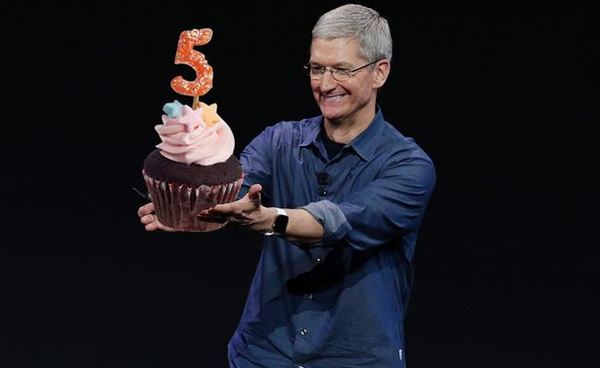7 years ago the first edition iPhone came to fruition and it had consumers at “hello”. But one of the world‘s favourite smartphones would not be here today had it not been for its sister device, the iPad. Celebrating its fifth birthday tomorrow, the iPad has come a long way since it was launched in 2010.
See “it began with the tablet”, then CEO Steve Jobs said, who had an idea for a multi-touch glass display, no stylus necessary. He asked Apple‘s engineers to investigate and six months later they returned with something, something that a “really brilliant UI guy” got scrolling with and led to a thought: “My God, we can build a phone with this!”
On April 3 2010, the iPad was brought to market – described as Apple‘s “most advanced technology in a magical and revolutionary device.” Said Jobs: “iPad creates and defines an entirely new category of devices that will connect users with their apps and content in a much more intimate, intuitive and fun way than ever before” – his legacy lives on.
The accolade of being “revolutionary” has certainly been earned, with the iPad, and its inspiration for the iPhone, having changed the way consumers shop for ever.
In an earnings call yesterday, ASOS Boss Nick Robertson said that mobiles devices and tablets would make up “the lion share” of traffic within months and he cited that several layers of the online fashion destination would continue to be re-engineered around mobile devices.
“To switch to mobile continues a pace, only launched at the end of 2010 now over 50% of our traffic comes from a phone or tablet device and in the UK this number is already 57%” Robertson commented.
This year alone, shoppers are due to spend £6.32bn via tablet devices in the UK, almost double the £3.62bn that was spent in 2014. Tablet users now account for around one in £10 spent online and 42% of all spending on mobile devices.
Giulio Montemagno, SVP International, of RetailMeNot – a market place for digital offers – believes that the iPad has been “revolutionary” in ways Apple couldn‘t have predicted.
“The amount of time consumers are spending on mobile devices as a whole has gone from 35 mins in 2011 to 2 hours per day in 2014” he explains.
Customers are shopping online in weird and wonderful ways (at the end of last year, British retailer John Lewis‘s online sales saw an increase in traffic between 12pm and 6am, due largely to their mCommerce offering) including on smartphones while commuting or tablets at home in the evening. Montemagno wouldn‘t discount that there are still too many retailers who haven‘t adapted their websites for mobile devices, making it difficult for customers to finalise their purchases.
“It is so much more attractive for consumers to consume on these devices and the shift is natural as they‘ve become indispensable tools in consumers‘ lives used not just for leisure” he says, adding that “there are conversation rates of up to 1000% between optimised and non optimised sites.”
When put into context where mobile traffic is growing in triple digits, and consumers are spending over 50% of their time on mobile devices, retailers can‘t afford to miss out on responsive websites.


















